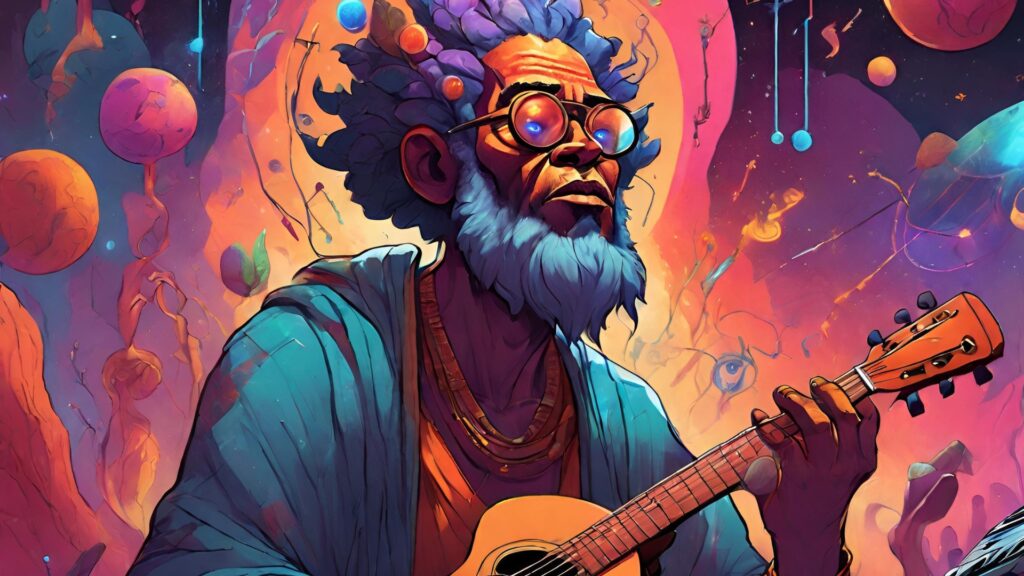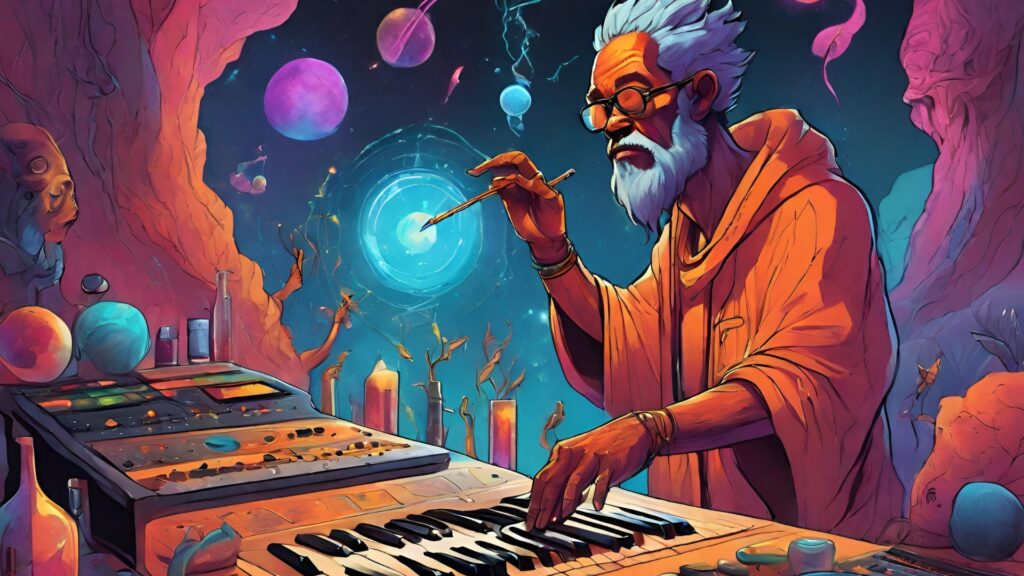
Music has held a sacred place in our hearts and culture. It’s a profound channel through which we express our deepest emotions, celebrate life’s serendipitous moments, and find solace in times of healing and prayer. But beyond being a mere art form, music is a timeless vessel of ancestral wisdom that transcends generations. Our forebears recognized the transformative power of melodies and rhythms, weaving music into their lives to celebrate the richness of existence and to connect with the divine. The echoes of our past sing out with through the legacy of music as more than just notes and tunes—it has been a path to freedom, a conduit for spiritual expression, and a timeless connection to our ancestral roots.
Cultural Expressions
Traditional music and folk songs from various cultures have preserved the stories, customs, and identities of communities throughout history. These age-old melodies often carry profound wisdom that transcends time. For example, in West Africa, Griots—oral historians and musicians—have passed down the history and wisdom of their societies through songs and stories for centuries. The Griot tradition not only imparts historical knowledge but also serves as a conduit for transmitting life lessons, values, and communal bonds. These oral traditions continue to influence contemporary African music and inspire musicians worldwide, showcasing the enduring power of music to convey ancient wisdom across generations. Today, these musical traditions provide a window into the past, fostering cultural awareness and appreciation. Musicians often draw from these traditions to create fusion and world music, celebrating diversity and intercultural exchange.
Healing and Wellbeing
Ancient civilizations, such as the Greeks, have long recognized the therapeutic potential of music. In ancient Greece, Pythagoras, the renowned mathematician and philosopher, delved into the mathematical relationships between music and healing. He unveiled the concept of the “Harmony of the Spheres,” suggesting that celestial bodies emitted harmonious frequencies capable of restoring balance to the human body and mind. Pythagoras’s insights laid the foundation for the healing power of music, inspiring generations to come. This ancient wisdom continues to resonate today as music therapy and sound healing, using the soothing melodies and harmonic frequencies employed by our ancestors, are harnessed to promote mental and physical wellness, alleviate stress, and reduce anxiety in contemporary therapeutic contexts.

Social and Political Movements
The transformative influence of music in driving social and political movements reaches far back into history. In the heart of ancient Rome, during the era of gladiatorial combat and political upheaval, the rebellious spirit of enslaved gladiators found resonance in music. These warriors, facing immense adversity, channeled their unity and defiance through songs of freedom and resilience. Ancient Roman records document the use of rhythmic chants and percussive beats, which not only served as a source of strength but also conveyed a collective determination to resist oppression. Today, these echoes of an ancient struggle continue to reverberate as musicians worldwide draw inspiration from the age-old legacy of music’s role in liberation movements. From modern protest songs to anthems advocating for human rights, music remains an enduring force for change, binding communities and advocating for justice.
Technology and Innovation
The historical development of musical instruments and technologies, from early percussion and string instruments to the invention of electronic synthesizers, has shaped the evolution of music production and composition. These innovations have expanded the sonic possibilities available to contemporary musicians and producers, pushing the boundaries of musical expression. In the cradle of civilization, ancient Mesopotamia, around 2000 BCE, the Sumerians introduced an ingenious innovation—the lyre. This stringed instrument, considered one of the earliest precursors to the modern guitar, featured strings made from animal gut or plant materials stretched over a resonating body. It represented a remarkable technological leap that allowed for the creation of diverse sounds and melodies, significantly enhancing the musical landscape of the time. This ancient invention laid the foundation for the rich tapestry of musical instruments and technologies that continue to shape music production and composition today.
Tools of Musical Liberation
Musical instruments have played a significant role in various ancient cultures as tools for enlightenment, spiritual connection, and emotional expression. These instruments often held a sacred place in rituals, meditation, and ceremonies, helping individuals attain higher states of consciousness and inner peace.
🎶 Sitar and Tabla :
In India, the sitar and tabla have been instrumental in the practice of classical music, particularly in the realm of Raga meditation. The sitar’s melodious tones and the tabla’s rhythmic beats create a meditative atmosphere conducive to introspection and spiritual growth.
🎶 Tibetan Singing Bowls :
Tibetan singing bowls are used in Tibetan Buddhism for meditation and healing purposes. When played, these bowls produce harmonic and resonant sounds believed to align chakras, promote relaxation, and induce deep meditative states.
🎶 Didgeridoo :
The didgeridoo, traditionally played by Indigenous Australians, is believed to connect players to the Dreamtime, their spiritual ancestry. Its rhythmic drone sound can induce trance-like states during ceremonies, fostering spiritual enlightenment.
🎶 Hand Drums :
drums played a central role in ceremonies, rituals, and gatherings, serving as a conduit to the spirit world, a means to communicate with ancestors, and a way to commemorate significant events. Drumming accompanied by chanting and singing created a deeply immersive experience. Additionally, these frame drums had therapeutic applications, believed to induce altered states of consciousness for healing and spiritual journeys. Furthermore, tribes utilized drumming as a mode of long-distance communication, with specific rhythms and patterns conveying messages over extensive distances. These drums held diverse cultural significance, with varying designs, styles, and traditions among different Native American tribes, each imbued with unique songs and stories.
🎶 Japanese Shakuhachi :
The shakuhachi, a traditional Japanese bamboo flute, has been used in Zen Buddhist meditation. Its deep, meditative tones are believed to help practitioners achieve enlightenment and a sense of inner peace.
Harmonizing Freedom and Creation From Past to Present
Music liberates us through the boundless expressions of our souls, the introspective journey within, and the timeless communication of emotional drive across ages. In essence, the musical heritage left by our ancestors is a rich tapestry that continues to weave its influence into the soundscape of today. The timeless melodies, rhythms, and cultural expressions passed down through generations remind us that music is a bridge that connects us to our past while inspiring our creative futures. It is an ever-evolving symphony that transcends the boundaries of time and space, reminding us that the songs of our ancestors still resonate within our hearts and inspire the harmonies of tomorrow. As we listen to the echoes of the past, we find ourselves dancing to the rhythms of history, embracing the melodies of tradition, and composing new verses that celebrate the enduring spirit of music in our lives.





